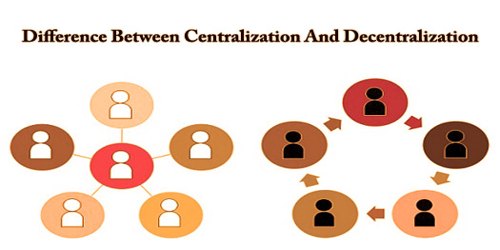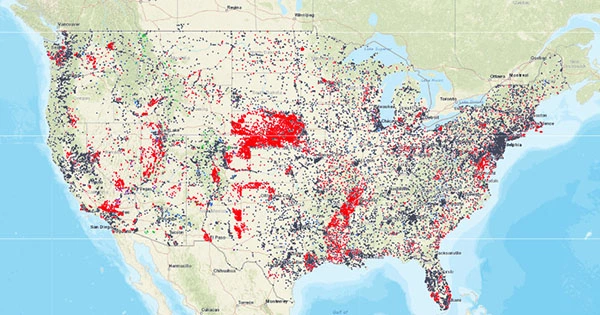As technology advances, many businesses lose sight of the importance of connecting with customers. When processes like product ordering become automated, valuable channels of communication close, and both businesses and individuals suffer. Customer needs are the things that customers require when purchasing a product or service. In order to be successful, businesses must learn about their customers’ needs.
A new study finds that the central bank tool known as quantitative easing aided consumers significantly during the last major economic downturn, a finding that has clear implications for today’s pandemic-hit economy.
More specifically, the study finds that one type of quantitative easing – in which the US Federal Reserve purchased massive amounts of mortgage-backed securities – drove down mortgage interest rates, allowing consumers to refinance their mortgages and spend more on everyday items, thereby bolstering the economy.
“Quantitative easing has a really big effect, but it does matter who it targets,” says Christopher Palmer, an MIT economist and co-author of a recently published paper detailing the study’s findings.
All told, the study finds, the Fed’s so-called QE1 phase from late November 2008 through March 2010, a part of the larger quantitative easing program, generated about $600 billion in mortgage refinancing at lower interest rates, bringing about $76 billion worth of additional spending back into the broader economy.
We saw a really big difference in who seemed like they were getting credit during quantitative easing. That means QE1 bypassed many people who needed it the most. Consumers with nonconforming mortgages, on aggregate, were in worse financial straits than people who could put more equity into their homes initially.
Christopher Palmer
However, as the study also demonstrates, the people benefitting from QE1 were a relatively circumscribed group of mortgage holders: borrowers from the Government Sponsored Entities (GSEs) Fannie Mae and Freddie Mac. So while observers may talk about quantitative easing as a “helicopter drop” of money, scattered across the public, the Fed’s previous interventions were relatively targeted. Recognizing that fact could shape policy decisions in the future.
“It’s not like the Fed drops money from a helicopter and then it lands randomly, uniformly, and equally across the population, and people pick up those dollars and spend money and are off to the races,” Palmer says. “The Fed intervenes in specific ways, and specific people benefit.”
The paper, “How Quantitative Easing Works: Evidence from the Refinancing Channel,” appears in the most recent issue of the Review of Economic Studies. The authors are Marco Di Maggio, an associate professor at Harvard Business School, Amir Kermani, an associate professor at the University of California, Berkeley’s Haas School of Business, and Palmer, the Albert and Jeanne Clear Career Development Assistant Professor at the MIT Sloan School of Management.

Mortgage relief for some
The introduction of quantitative easing during the Great Recession was a notable expansion of the tools used by central banks. Rather than limiting its holdings to treasury securities, the U.S. Federal Reserve’s purchase of mortgage-backed securities – bonds backed by home loans – gave it more scope to boost the economy, by lowering interest rates in another area of the bond market.
The first round of quantitative easing, QE1, which began in November 2008, included $1.25 trillion in mortgage purchases. The second round, QE2, which started in September 2010, focused exclusively on treasury securities. The third round, QE3, was initiated in September 2012 and was a combination of mortgage and treasury security purchases.
To conduct the study, the researchers drew heavily on a database from Equifax, the giant consumer credit reporting agency, which includes detailed individual-level information about mortgages. That includes the size of individual loans, their interest rates, and other liabilities. The database covered about 65 percent of the mortgage market.
“It basically allowed us to trace the flow of Fed mortgage purchases down to individual households — we could see who was refinancing when the Fed intervened to lower interest rates,” Palmer says.
According to the study, refinancing activity increased by about 170 percent during QE1, with interest rates falling from about 6.5 percent to 5 percent. However, the Fed’s purchasing activity was heavily focused on “conforming” mortgages – those that met the guidelines of the GSEs, which frequently require loans to cover no more than 80 percent of a home’s value. Because the Fed did not direct its resources toward nonconforming mortgages, fewer people refinanced their mortgages.
“We saw a really big difference in who seemed like they were getting credit during quantitative easing,” Palmer says. That means QE1 bypassed many people who needed it the most. Consumers with nonconforming mortgages, on aggregate, were in worse financial straits than people who could put more equity into their homes initially.
When the researchers examined the data geographically, they discovered that much less refinancing occurred in the “sand states,” which issued a large number of subprime, nonconforming mortgages, particularly Florida, Arizona, Nevada, and the Inland Empire region of California.
“People who are outside the conforming mortgage system are often those who need help the most,” Palmer says. “This could be because their loan size is too large, their equity is too small, or their credit score is too low.” “They frequently needed stimulus the most but couldn’t get it because credit was too tight.”
Take it easy
Given both the success and targeted nature of QE1, Palmer suggests that future interventions could be broadened. “One of our takeaways is that if the Fannie and Freddie requirements can be temporarily loosened, then Federal reserve QE purchases can do a lot more good, because they can reach more borrowers,” Palmer says.
In a broader sense, as the Covid-19 pandemic continues, Palmer believes we should continue to investigate how and to whom central banks can provide relief. With interest rates so low, the Federal Reserve of the United States cannot provide much broad relief by adjusting rates. More assistance may be forthcoming from initiatives such as the CARES Act-facilitated Main Street Lending Program, which runs through September.
“When credit markets become locked up, there is less opportunity for your local restaurant, auto-body shop, or toy store to take advantage of lower interest rates,” Palmer says. Instead, targeted programs are “essentially an attempt to direct the Fed’s monetary stimulus directly to the people who need it.”
















